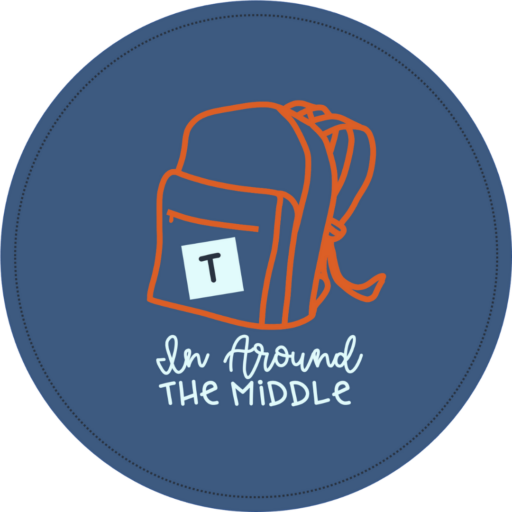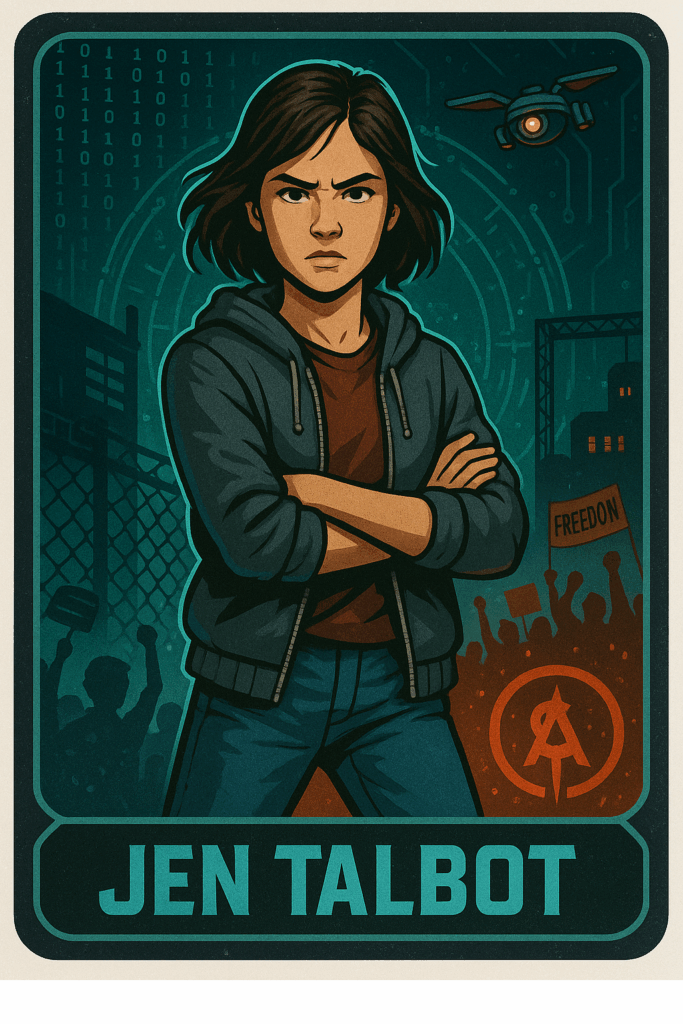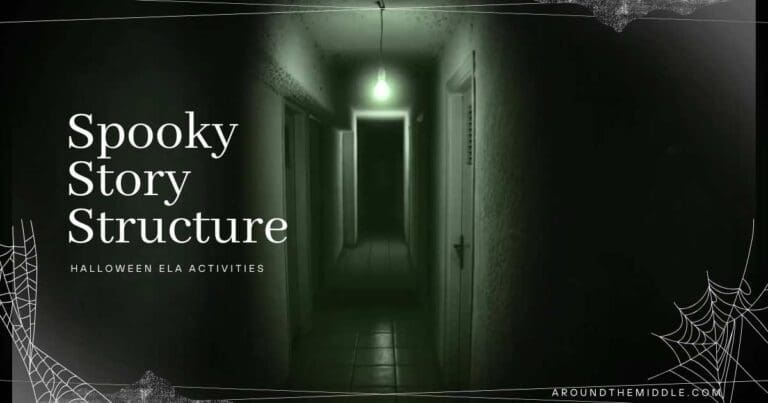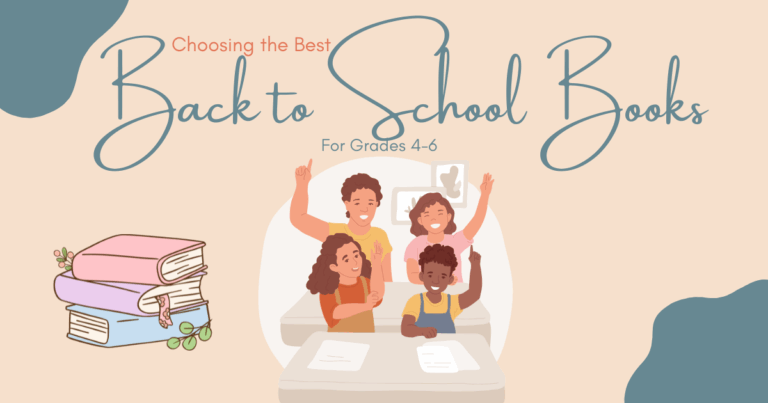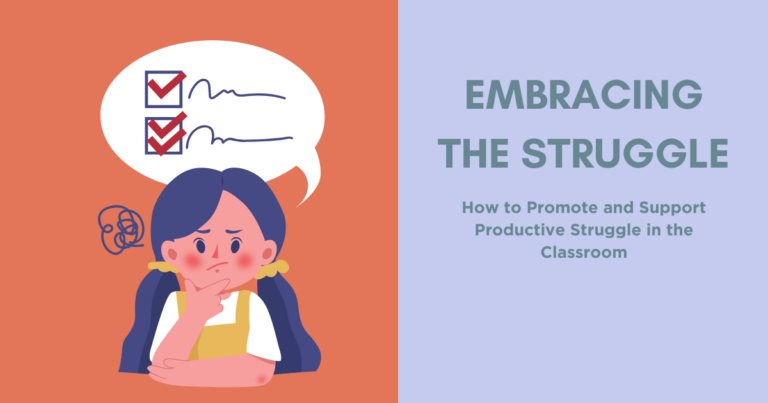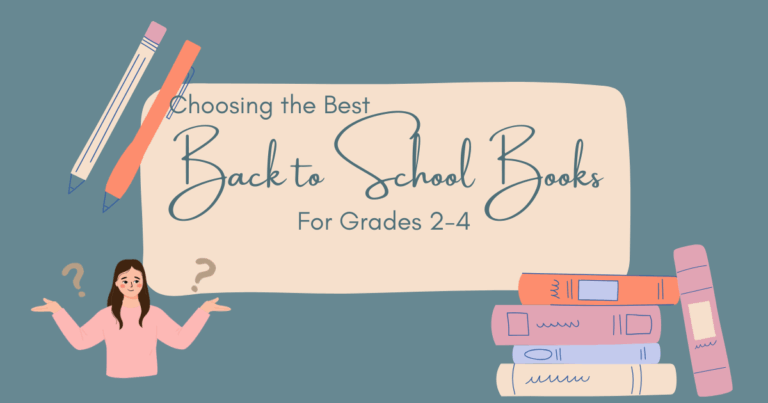Breakthrough Novel Study Activities That Actually Work for Week One
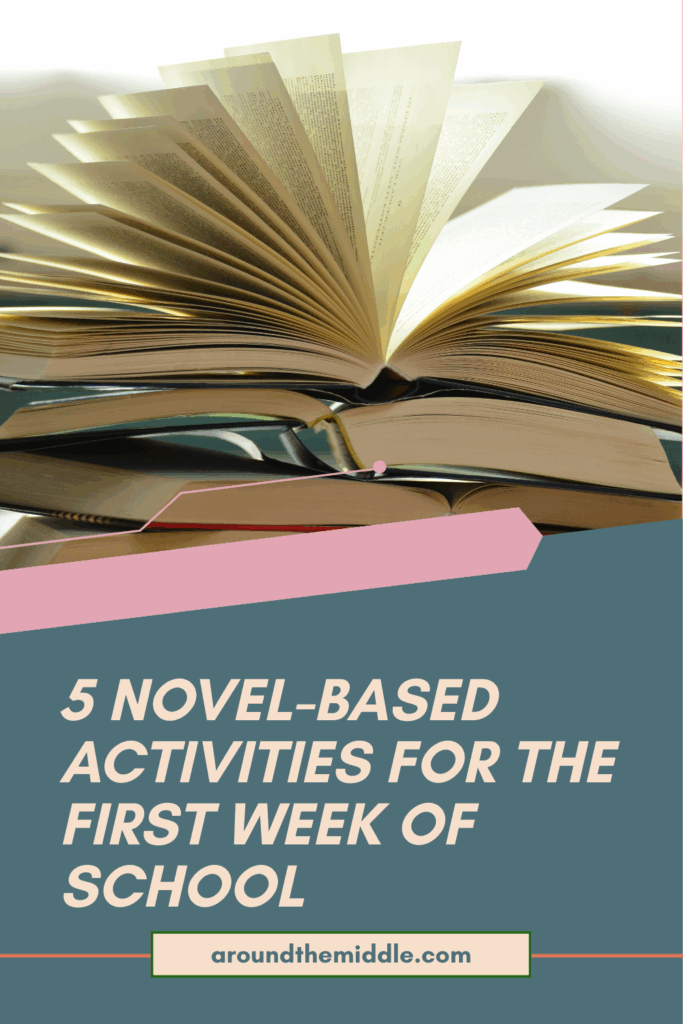
The first week of school can feel like a high-speed balancing act—new names, fresh expectations, classroom routines, and all the nerves (yours and theirs). You want students engaged, connected, and learning—but not burned out by Day 3 and groaning about novel study activities.
Enter: novel study activities that hit all the right notes. They get students thinking without overwhelming them, build relationships without awkward icebreakers, and help you ease into the year with purpose.
These are my go-to novel study activities for Week 1—low-prep, high-engagement, and classroom-tested with upper elementary and middle grade students. Even better? They don’t feel like “work” to your students—but the learning is very real.
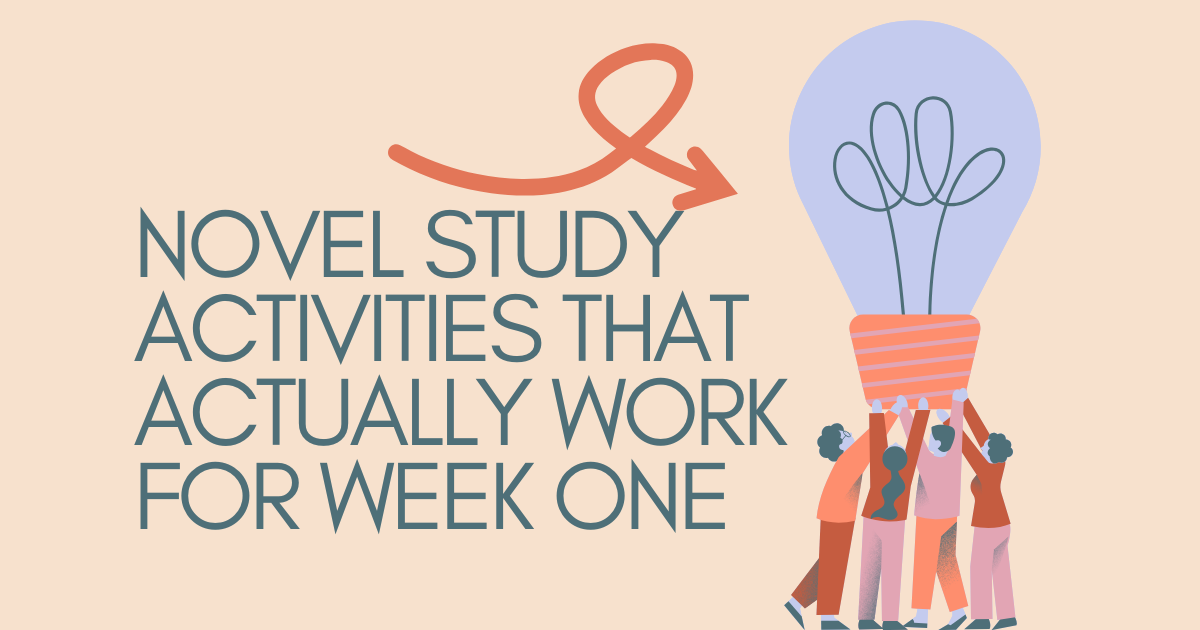
Start with the Right First Week Novel
You don’t need to dive into a dense or “classic” text to start the year strong. Choose something accessible, engaging, and rich with discussion potential. I usually read it aloud to level the playing field—many students are still shaking off summer brain, and not all are reading at grade level yet. Check out my blog post on this subject here (grades 2-4; 4-6, and 6-8)
Some of my go-to first-week novels include:
- Among the Hidden by Margaret Peterson Haddix
- Wonder by R.J. Palacio
- Fish in a Tree by Lynda Mullaly Hunt
- Frindle by Andrew Clements
- Because of Winn-Dixie by Kate DiCamillo
These books hook students quickly, introduce big ideas gently, and open the door to deeper thinking as the term unfolds. If you haven’t yet, download my free guide: 👉 How to Choose the Right Novel to Start the Year Strong
Even during the year, the same thinking applies: choose well, teach with intention, and watch your students grow—not just as readers, but as thinkers.
Start with Pre-Reading Debate novel studies activities That Get Them Thinking
Before we even open the book, I love to begin with bold, theme-based debate statements that challenge students’ beliefs and encourage discussion and get them hooked. These aren’t about right or wrong—they’re about why students think what they think.
Here’s how it works:
- Post 4–6 statements around the room. Examples for Among the Hidden:
- “Sometimes silence does more harm than speaking out.”
- “Rules are meant to be questioned, not blindly followed.”
- “You can’t change the world yourself, so there’s no point in trying.”
- “A strong government is more important than individual choice.”
- Get students up and out of their seats to the left or right side of the room, depending if they “Agree” or “Disagree.”
- Ask a few brave volunteers to explain their thinking.
- Let the group respond or build on each other’s ideas.
This novel study activity creates instant energy, starts building a respectful discussion culture, and primes students for the novel’s central themes. These are also great to revisit later when they can see the connections to the events in the novel to see if they have changed their mind (and ask them to justify why!).

Get Students Moving with Pre-Reading Scavenger Hunt novel study activities
A pre-reading scavenger hunt is my secret weapon for hooking interest and giving students background knowledge without lecturing.
Here’s what it looks like in action:
Prep:
- Print out 8–10 short, themed paragraphs or facts that connect to the novel’s world (e.g. population control, hidden children, government laws).
- Place them around the room or in folders at stations.
Student Task:
- In pairs or small groups, students rotate and read each excerpt.
- They answer a quick question, respond to a prompt, or have to answer a question from a different card at each stop.
- For mine, I have added an ‘escape room’ type feel to it with a secret word to unscramble and a final ‘code’ to unlock. This is a great way to gamify their learning and keep them engaged.

Example for Among the Hidden with prompts:
Paragraph: “In some countries, families are restricted to having only two children.”
Prompt: “How might this affect a family who wants more?”
Student response: “They might hide a child. They’d have to lie or break the rules.”
This sets the stage for what’s coming without giving anything away—and it gets them up, talking, and making early connections. It’s also an opportunity to teach them any information they need to be able to understand the world of the novel better.
Build Connection Through Character Trait Conversations in your novel study activities
We meet key characters quickly in most novels, and I love to use character trait task card novel study activities to get students thinking and relating.
How it works:
- Prepare 6–10 cards with traits like “brave,” “obedient,” “rebellious,” “lonely,” “loyal,” etc.
- Ask students to match traits to characters they’ve just met and justify their answers with early evidence.
- Use the cards to prompt pair or small group discussion:
- “Who is the most cautious character so far?”
- “Who do you think will take the biggest risk—and why?”
This novel study activity lets students talk about character growth without getting personal too soon. It’s a great entry point into evidence-based discussion, and it sets the tone for thoughtful analysis moving forward. Check out this post for fun and engaging follow-up activity ideas with character task cards.
Introduce a Theme Tracker (and Start Using It Right Away) to your novel study activities
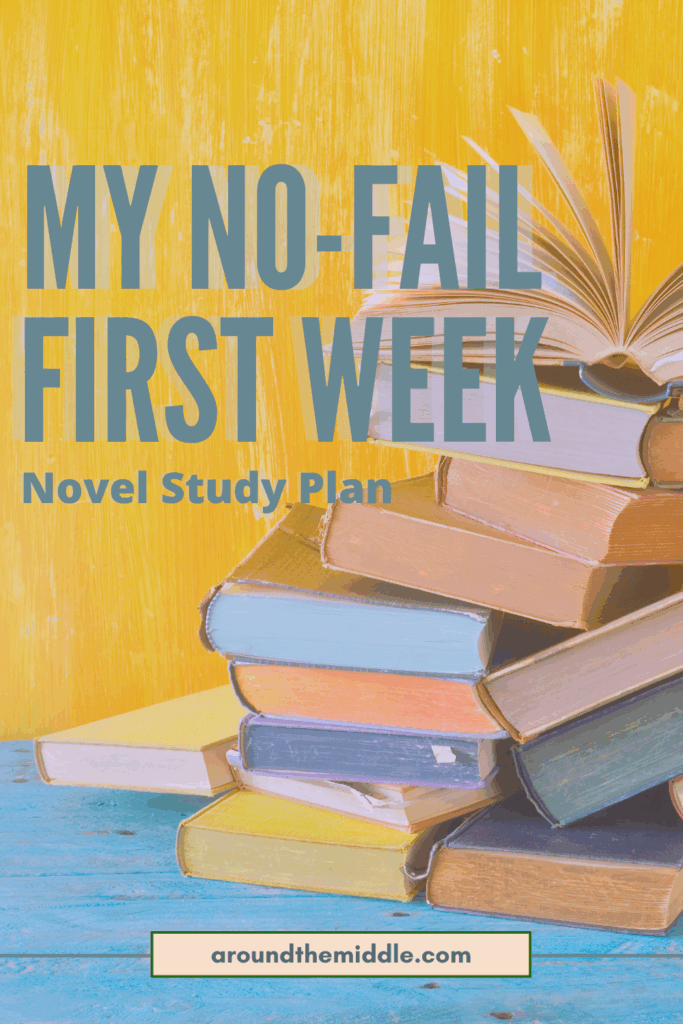
One of the best ways to scaffold deeper thinking from Day 1 is to track themes as they emerge. Students don’t need to master theme on the first try—they just need to start noticing.
Here’s how I use a theme tracker:
Setup:
Create a simple chart with columns for:
- Theme
- Example from the text
- Character or event it connects to
- Student reflection
Early entries for Among the Hidden might include:
| Theme | Example from the Text | Character/Connection | Student Reflection |
|---|---|---|---|
| Isolation | “Luke spends his days watching the woods.” | Luke | Being hidden must make him feel invisible. |
| Government Control | “The Population Law said families were allowed only two children.” | Luke’s Family | That law affects everything they do. |
You can do this as a class anchor chart, a weekly warm-up, or part of a notebook routine. The tracker grows with the novel—and becomes a go-to source when it’s time for essays, projects, or discussions.
End the Week with Team Challenge Task novel study activities
Once you’ve read a few chapters and students are comfortable, I love to end the first week with a team challenge based on what they’ve learned.
Here’s an example from Among the Hidden (Chapters 1–7):
Activity: Logic Puzzle: “Secrets in the Shadows”
Task: Students match each character to an action and a reason using clues that require inference and recall.
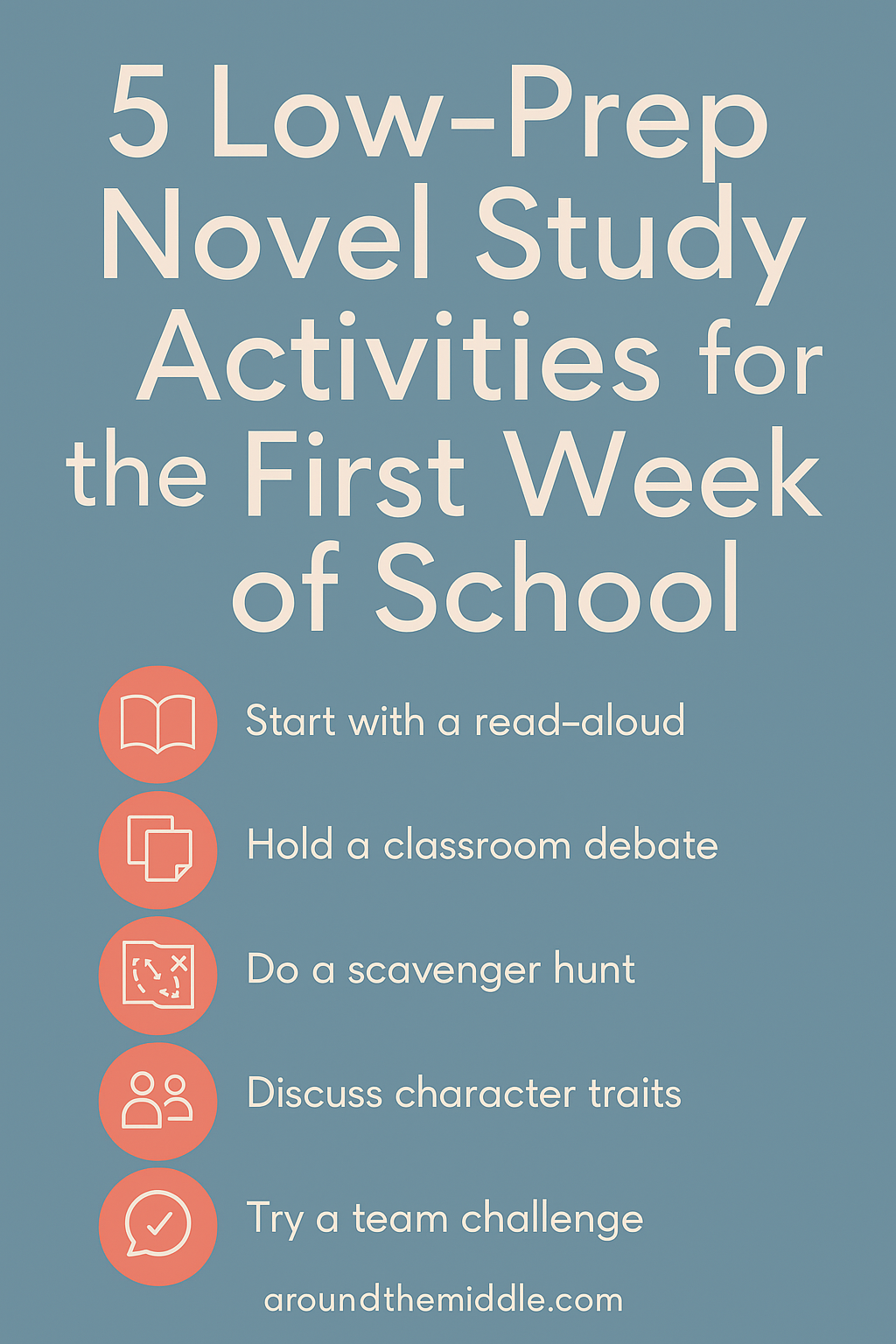
Clue: “The person who installed the attic vents did so to make hiding easier.”
Clue: “The builders never speak to Luke, but their actions changed his life.”
Clue: “Luke’s mom gave him something to keep his mind busy.”
You can create puzzles like this using key scenes and details—or use open-ended challenge cards:
- Rank the characters from most to least obedient. Justify your order.
- Which character would survive best alone? Create a survival plan based on their traits.
- What would each character do if they were caught?
Challenge-style group activities add a feeling of competition and fun to reviewing and usually cause a lot of natural, small-group debate and discussion. You could give points to groups over the course of the novel or switch up the groups each week and give a small prize or bragging rights to add to the fun.
Final Thoughts: Make the First Week of novel study activities Count (Without Burning Out)
Your first week doesn’t need to be filled with rigid routines or non-stop paperwork. Instead, it can be full of:
- Movement
- Curiosity
- Character connection
- Light analysis
- And just enough structure to build habits that last
These novel study activities make students feel like they’re already “doing real work”—but they also lower anxiety, set a positive tone, and establish your classroom as a space where thinking matters.
Want to save time? I’ve got ready-made pre-reading scavenger hunts, and debate prompts and activities for many popular novels—so you can prep in minutes and focus on teaching.
Happy teaching
